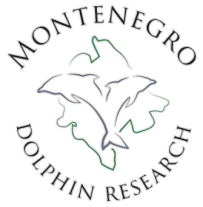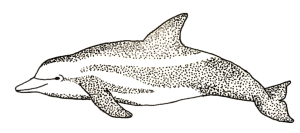THOUGHTS from our Operations Director Tim Awbery, Senior Research Associate Wow! What a tough year it has been. From reduced financial income to a complete halt in all survey operations from March-June, we’ve faced some incredible challenges. Nevertheless, thanks to incredible work from our staff, interns and helpers from around the globe we have adapted, evolved and overcome problem after problem and are delighted to announce that COVID-19 has not put a stop to our research or conservation efforts in Montenegro. Research November saw our first month with a return to full survey effort with 14 land-based surveys and 2 boat-based surveys bringing us to a total of 36 land-based and 7 boat-based surveys since our last issue in September. Kudos goes to our Research Assistants as well as Intern Coordinator, Selina Brouwer for all the early starts, late finishes and constant changes to the plan to accommodate the ever changing weather and COVID restrictions. In Issue 1, we told you about the launch of our Montenegro Dolphin Sightings Network. With summer over and less people on the water, we were worried that we would see a big slump in reported sightings. This hasn’t been the case at all and we’ve received some really useful data which will help fill our data gaps caused by COVID. This important citizen science is set to become a feature of an article in the next issue of FINS, the annual magazine of ACCOBAMS (The Agreement on the Conservation of Cetaceans of the Black Sea, Mediterranean Sea and contiguous Atlantic Area). MEETINGS, CONFERENCES and ACTIVITIES Government of Montenegro: Despite initial postponements due to COVID, we managed to organise an online meeting with the Montenegrin government to update them on the work that we are doing and our results so far. We look forward to working with them closely in the future. IMEKO TC-19 2020 INTERNATIONAL WORKSHOP ON METROLOGY FOR THE SEA: In early October, Montenegro Dolphin Research staff presented at the IMEKO virtual conference and were awarded, “Best Paper Presented by a Young Researcher”. Turning the Tides: Cetacean Research and Conservation in Turkey and Montenegro: A week later, MDR’s Scientific Director was inspiring young minds at Whale Camp, an online event to encourage individuals to get into marine mammal research.Beach Cleaning: Once again DMAD joined the mighty youth force of NGO Our Action to help clean up the beaches of Montenegro, this time at beaches near Bulgarica. Mediterranean Protected Area Network (MedPAN): In November, Montenegro Dolphin Research staff participated in both the Partner’s Meeting and the Annual General Meeting of MedPAN, an organisation that strives to improve the protections given to marine areas by sharing knowledge between protected areas. Blue Engineers of Montenegro II: In a follow-up to our first presentation, the MDR team were back in action talking to the youth of Kotor as well as Radio Kotor about what our team has learned so far from the four years of research we have conducted (all in a COVID friendly manner). International DMAD Turkey: Back in September, we brought you the news that the new DMAD offices in Antalya were ready to be moved into. Our team is now moved in and flourishing, having conducted surveys in the Istanbul Strait and the Aegean Sea under WWF Turkey as well as getting involved in WWF’s bycatch workshops this November. From our Neighbouring Countries: In October, the Croatian Institute of Oceanography and Fisheries alongside Blue World Institute began the pilot study of the Soundscape Project, an assessment of Recreational Boat Noise to help better protect sensitive marine environments. A Note From Our Editor Normally, this is where we would list our upcoming events, however, if you’ve got this far through the newsletter you will know that (just like the rest of the world), coronavirus makes it difficult to plan what’s happening next week, let alone in 2021 and we don’t want to promise events that we can’t guarantee. We would like to take a moment to thank all of our Montenegrin Interns who have worked tirelessly on site and our Remote Interns, who have helped our efforts from afar and who are collectively responsible for all we have managed to achieve so far. We can’t guarantee you a community day in January 2021, nor that it will be safe enough for us to go into schools or give presentations to youth organisations but we do guarantee this:DMAD’s Montenegro Dolphin Research project will continue to do our absolute utmost to keep our research and public outreach at its maximum capacity, to help protect dolphins in Montenegro and make our seas a little better for eveyone. Enjoy the festivities and stay safe, The DMAD Team Keep your eyes peeled for our next issue which will be out in March 2021!

